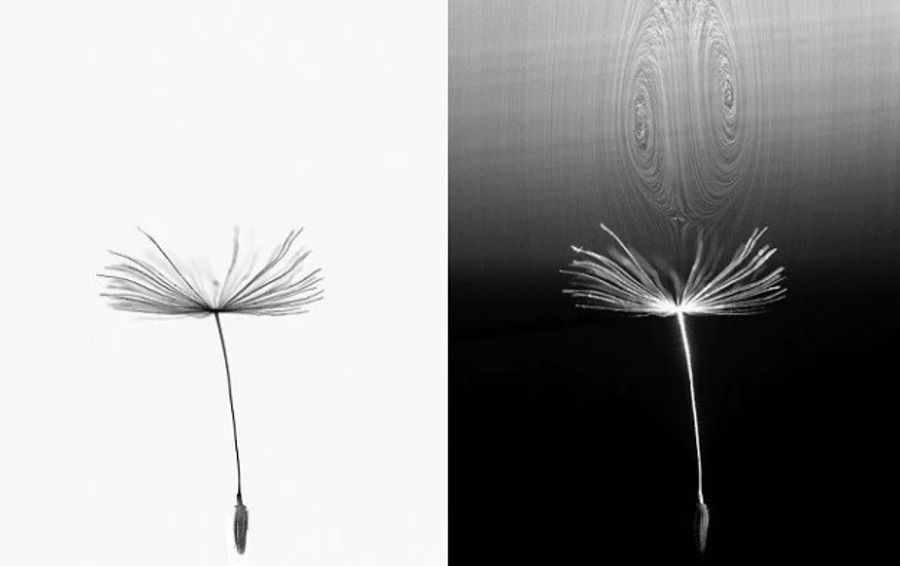The secret of dandelion seed flight
The remarkable ability of dandelion seeds to move through the air is made possible by a form of flight not previously observed in nature. The seeds of this plant form vortices in the air, which enables them to fly long distances of up to several kilometers.
The dandelion or common dandelion, also commonly called dandelion, is a common plant and can be found almost everywhere in the world. The plant releases its seeds easily with just a breeze. Each of the dandelion seeds is suspended on a stalk, which ra is a bit like a parachute. The parachute is basically a bunch of hairs in what is called a cup down. There are about 100 hairs in this down , with which each of which is attached to a central point.
Chalice fluff, like a parachute, increases the op The aerodynamic effect slows down the fall of seeds to the ground, allowing them to travel up to several kilometers from the mother plant. This much we knew so far.
The exact mechanism behind this unusual flight was not fully understood. Until now. Scientists at the University of Edinburgh have discovered that the movement of air around The space between the hairs of the cup down allows the seed to travel long distances. Researchers conducted experiments to better understand why dandelion seeds fly so well, even though their parachute-like structure consists largely of empty space.
The findings were published in the journal „Nature”.
Analyses have shown that during the flight wok D. and ring-shaped air vortices form between the hairs, increasing the op r and slowing down the fall of seeds to the ground. This newly discovered form of bubble formation The parachute is basically a bunch of hairs in the air (separated vortex ring), which They are physically separated from the in the cup down, is stabilised by the air flowing through it.
These vortices are located above the calyx and the amount of air flowing through them is precisely controlled by the spacing of the hairs . But the key lies not in the down hairs themselves but in the spaces between them. Research shows that the air currents created by each hair interact with the vortices created by neighboring hairs, thereby creating maximum op r with minimal mass expenditure.
But for the mechanism to work you need the right combination of size, mass, shape and, most importantly, porosity. It is the porosity that determines the shape and nature of the vortices that form in the air. This mechanism is the basis of dairy seed flight, and researchers say it is four times more efficient than what is possible with conventional parachute designs. Scientists also suggest that the dandelion’s porous parachute may inspire the designer of the in a small drone , requires low power consumption. Such drones could be used, for example, to monitor air pollution.
This is a perfect example of how evolution can produce ingenious solutions to the most complex problems in things like spreading seeds. – A look at ingenious structures in nature – such as the dandelion’s parachute – can reveal unknown mechanisms. We found a natural solution to the flight, which The gyroscopes are designed to minimize material costs in and energy and can be used in the zr equivalent technologies – said Cathal Cummins of the University of Edinburgh School of Biological Sciences and Engineering.
